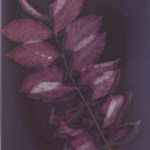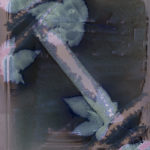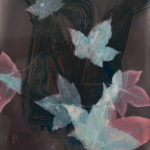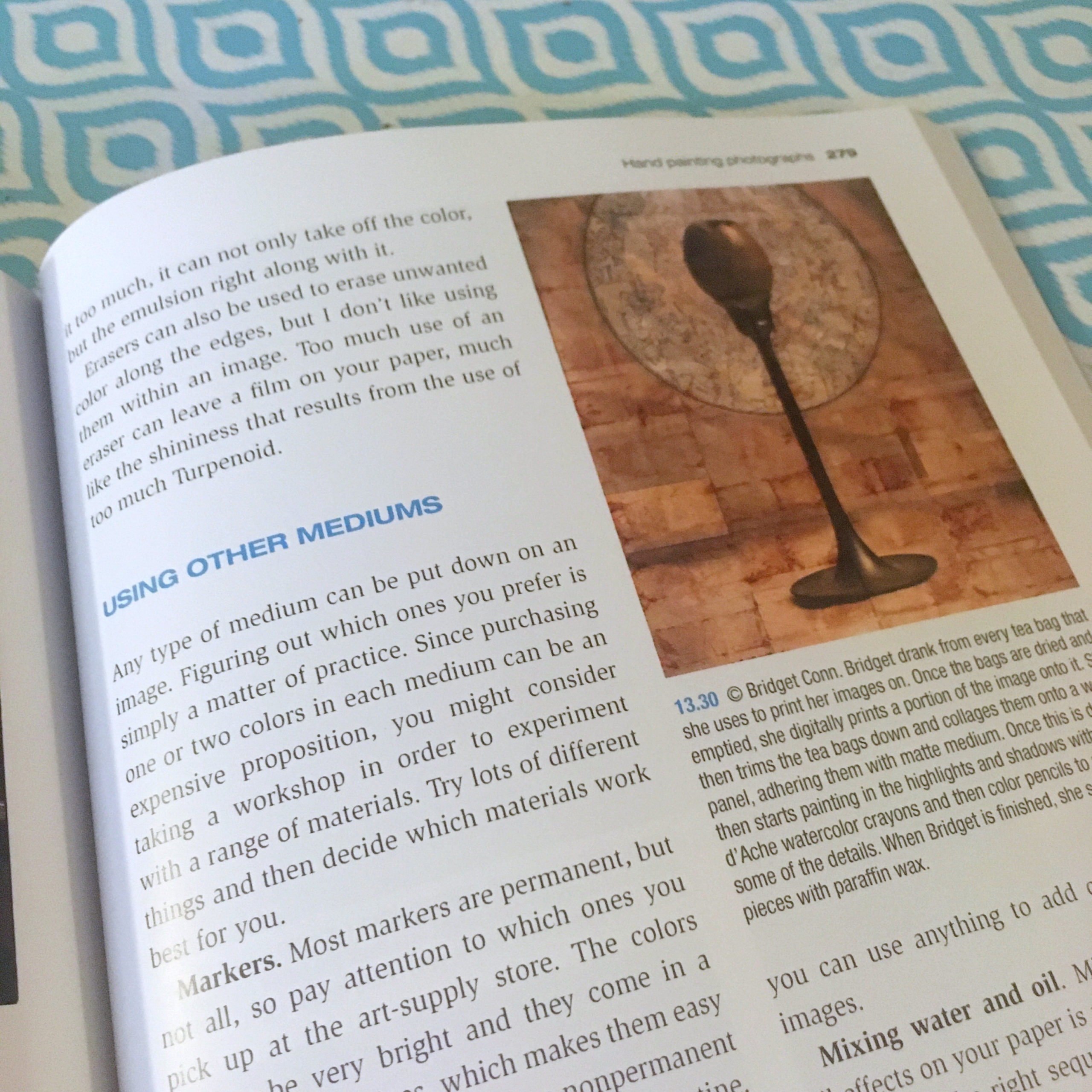
“New Land Studies (Evening Primrose)”; Silver gelatin cyanolumen print, thread, turmeric; 13″ x 11″; 2024
I was fortunate enough to see one of my favorite comedians, Eddie Izzard, at a show about a week before the election. To the surprise of no one, she did not avoid the subject of the dreaded upcoming American event. She frequently peppered her performance with the encouragement of: “Be curious. Be brave.”
Curiosity has never been a problem for me. Bravery, as of late, may be another question. I have been on a news blackout since November 6, and it’s hard not to envision an actual graphic of my head in the sand when I contemplate that choice.
Over my birthday in late September, I watched firsthand as Hurricane Helene swallowed up life as everyone knew it in Western North Carolina – the first place I ever felt, in my bones, a true sense of geographic home. I spent most of 2024 paralyzed by unexpected financial uncertainty, unable to fully embrace the new life I chose for myself when I left Georgia for Indiana. I spent the last half of 2023 stuck in the muddy waters of relocation, unable to create for months while living life out of boxes.
So as I find myself finally getting my head above water, in the unfortunate moment of November 2024, I’m just not ready to give myself back over to the desperation I felt during his first term. I know it’s a privilege to be able to take this stance. I know there will be a time to fight, and that now is the big deep breath before that time arrives.
In light of the election, writer Rob Brezsny posed a series of questions that I’ve been contemplating in recent days:
- How do we cultivate cheerful buoyancy even as we neutralize the bigoted, autocratic poisons that are on the loose?
- How can we be both wrathful insurrectionaries and exuberant lovers of life?
- How can we stay in a good yet unruly mood as we overthrow the mass hallucinations that are metastasizing?
- In the face of the danger, how do we remain intensely dedicated to building beauty and truth and justice and love even as we keep our imaginations wild and hungry and free?
- Can our struggle also be a form of play?
These questions justify my instinct that we are going to have to preserve some joy and wonder to fight the darkness that lies ahead. I’m thinking a lot about the fine line between escapism and self-preservation. I’m usually the one drowning herself in the 24-hour news cycle, but I may just be rounding a corner, realizing humans really aren’t wired to take in all that information. And I’m drawing strength from my new environment in order to make these changes.
I made these “New Land Studies” this summer as I explored flowers and plants growing wild across our hills — symbols of my change in lifestyle that no longer requires me to keep a sterile, manicured lawn for the comfort of others. I’m experimenting compositionally, but also technically, as I sew together various brands of photo paper and only partially fix the lumen prints. I’m enjoying how the chemistry dictates the visuals based on the physicality of the sewn paper itself. This physicality reinforces my desire to be more present in moments, doing less in front of a screen, and more in the three-dimensional world.
We will all need to draw our strength from somewhere for the years to come in this country. I feel fortunate to have this land to ground me as I figure out the most appropriate ways to help those who will truly need help. I hope to create a space where I can invite others to be curious, and hopefully also brave.














































